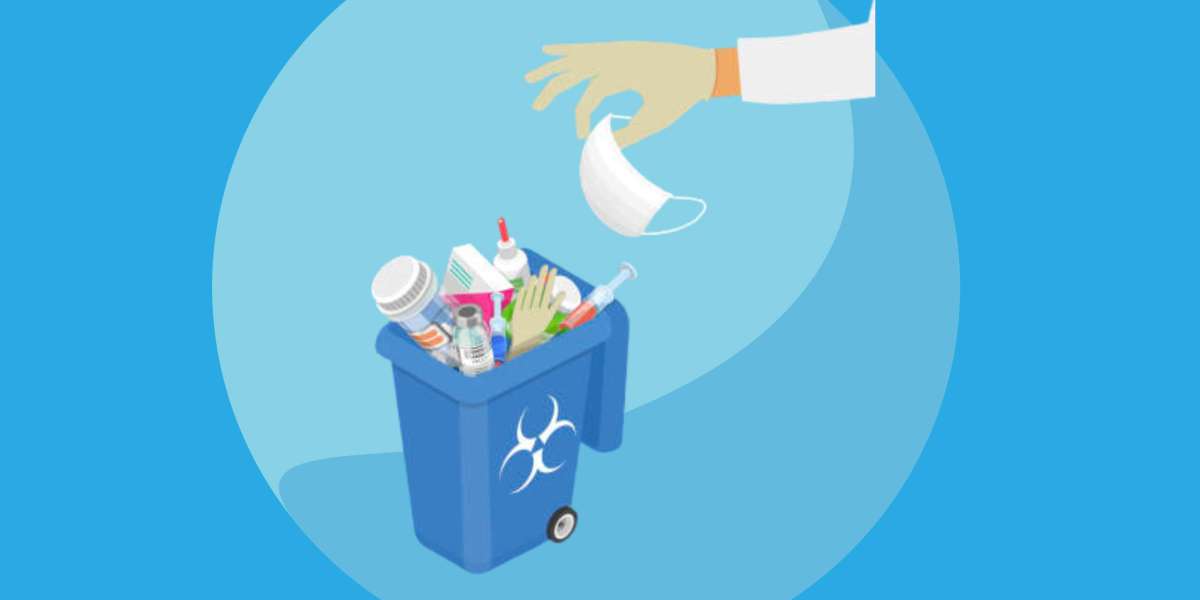In the realm of healthcare, the commitment to patient well-being extends beyond the doctor's office and the hospital ward. It transcends the immediate boundaries of care and extends to the proper management of medical waste. Medical waste, a byproduct of healthcare facilities, can pose significant risks to public health if not handled, treated, and disposed of properly. To ensure the safety of healthcare workers, patients, and the general public, rigorous medical waste disposal regulations are in place. In this blog post, we will embark on a comprehensive exploration of medical waste disposal regulations, shedding light on their significance in safeguarding public health.
The Nature of Medical Waste:
Medical waste, often referred to as healthcare waste or biohazard waste, encompasses a wide range of materials. These materials can include used syringes, contaminated dressings, surgical instruments, pathological waste, and more. What makes medical waste particularly concerning is its potential to carry infectious agents, such as bacteria and viruses, which can pose health risks.
The Purpose of Medical Waste Disposal Regulations:
The driving force behind medical waste disposal regulations is the preservation of public health. These regulations are not mere bureaucratic formalities; they are the backbone of a comprehensive system that seeks to protect healthcare workers, patients, and the environment from potential harm.
Waste Classification:
One of the fundamental aspects of medical waste regulations is the classification of waste. Medical waste is categorized into distinct types, each with its own set of requirements. For example, infectious waste, sharps waste, and pharmaceutical waste are classifications that dictate how each type should be managed and disposed of.
Preserving Public Health:
The primary focus of medical waste disposal regulations is to safeguard public health. By adhering to these regulations, healthcare facilities can reduce the risk of infection transmission. This is particularly crucial in healthcare settings, where patients are often vulnerable and at a higher risk of infection.
Environmental Preservation:
In addition to public health, medical waste disposal regulations also extend their protective arm over the environment. Improper disposal of medical waste can lead to contamination of soil, water, and air, posing risks to ecosystems, wildlife, and the planet as a whole.
Segregation at the Source:
A fundamental principle of medical waste disposal regulations is proper segregation at the source. This practice ensures that different types of waste do not cross-contaminate each other. Segregation minimizes the risk of infections and injuries, making it an integral component of regulatory compliance.
Packaging and Labeling:
Medical waste regulations dictate that biohazardous materials must be stored in approved containers. These containers are designed to be leak-proof and puncture-resistant to prevent the release of infectious agents. Furthermore, they must be clearly labeled to indicate their contents and potential hazards, ensuring safe handling and transport.
Storage Guidelines:
Stringent storage guidelines are a crucial component of regulatory compliance. Medical waste regulations stipulate that designated storage areas with restricted access should be established to prevent unauthorized handling. These storage areas must meet specific standards, including containment systems and security protocols.
Transportation Requirements:
The transportation of medical waste from healthcare facilities to treatment and disposal sites is subject to strict compliance with transportation guidelines. The waste must be packaged and labeled in accordance with regulations to guarantee the safety of the personnel involved in transportation.
Treatment Methods:
Medical waste regulations outline approved methods for treating medical waste. These methods include autoclaving (steam sterilization), incineration, and chemical treatment. The choice of treatment method depends on the type of waste and is vital for ensuring the neutralization of infectious agents.
Documentation and Reporting:
Accurate and comprehensive documentation of medical waste generation, handling, and disposal is not just a regulatory requirement; it is a critical aspect of transparency and accountability. These records enable regulatory authorities to monitor and assess an organization's activities and help in maintaining compliance.
Community Engagement:
Medical waste disposal regulations emphasize the importance of community engagement and stakeholder involvement. Actively engaging with the community is essential for building trust and transparency. Demonstrating a commitment to responsible medical waste disposal enhances an organization's reputation and underscores its environmental responsibility.
Sustainability and Responsibility in Medical Waste Management:
The intersection of medical waste regulations with sustainability and responsibility is an evolving area of focus. As the world grapples with the challenge of managing healthcare waste effectively while minimizing environmental impact, several key elements underscore the significance of this confluence.
Sustainable Practices: Medical waste regulations provide the foundation for safe management, but organizations are encouraged to go beyond mere compliance. Sustainable practices in medical waste management encompass strategies such as waste minimization, recycling, and energy recovery.
Waste Minimization: The principle of waste minimization aligns with the sustainability agenda. By implementing practices that reduce the generation of medical waste, healthcare facilities can significantly reduce their environmental footprint and cut down on disposal costs.
Recycling: Just as in general waste management, recycling in medical waste management is an important aspect of sustainability. Many materials can be reclaimed and reused, reducing waste volumes and conserving resources.
Energy Recovery: High-temperature incineration, used in medical waste treatment, can transform waste into energy. This not only reduces waste but also contributes to a cleaner energy mix, less reliant on fossil fuels.
Responsible Chemical Treatment: Some medical waste materials can be treated with chemicals to neutralize or stabilize the waste, making it less hazardous. This practice minimizes the environmental impact of waste disposal.
Advanced Treatment Technologies: Innovations in treatment technologies, such as bioremediation or thermal desorption, have the potential to reduce the environmental footprint of medical waste disposal. These technologies offer more sustainable alternatives to traditional methods.
Practices of Sustainable Medical Waste Management:
Adopting sustainable practices in medical waste management offers numerous benefits:
Environmental Responsibility: Sustainable practices in medical waste management reduce the environmental impact, preserving natural resources, minimizing pollution, and protecting ecosystems.
Cost Reduction: Many sustainable practices lead to cost savings through reduced waste disposal and material procurement.
Compliance and Reputation: Aligning sustainable practices with medical waste regulations ensures compliance with legal requirements while enhancing an organization's reputation as an environmentally responsible entity.
Resource Conservation: Recycling medical waste not only reduces waste volume but also conserves valuable resources, making them available for future use.
Energy Efficiency: Energy recovery practices, such as waste-to-energy incineration, reduce the need for fossil fuels, promoting a more sustainable energy mix.
Risk Mitigation: Sustainable practices, such as responsible chemical treatment and advanced treatment technologies, minimize the risks associated with medical waste, making transportation and disposal safer.
Medical Waste Disposal Regulations: A Pillar of Public Health
Medical waste disposal regulations are not mere red tape; they are an essential component of public health and environmental protection. By understanding the significance of these regulations and aligning them with sustainable practices, healthcare facilities can contribute to a safer and more sustainable future. The benefits extend beyond compliance, encompassing cost savings, resource conservation, and a positive reputation.
As we navigate the path towards a more sustainable future, it's essential to recognize that proper medical waste disposal is a vital step. It combines the imperative of regulatory compliance with the responsibility to protect public health and promote long-term ecological balance. In doing so, we create a safer and cleaner world for ourselves and future generations.








